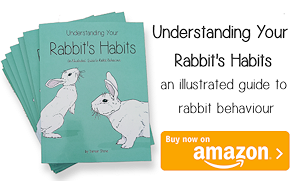Insulating a Shed or Playhouse
Insulating you rabbit's shed will help your rabbit stay warm throughout the cold winter weather and cool on hot summer days.
Insulation works by creating a barrier that heat can't transfer through, so on a hot day the heat from the sun stays trapped outside (making the inside cooler) and on a cold day the warmth from your rabbits stays trapped inside (making the inside warmer).
Although there are many different types of insulation, such as foam, bubble wrap, polystyrene and wool, they all use trapped pockets of air to form the heat barrier. A duvet works the same way, the air trapped in the fluffy filling creates a barrier trapping your body heat underneath it and keeping you warm.
Types of Insulation
For insulating a rabbit shed or playhouse it is best to select insulation that is easy to work with and non toxic (in case your rabbit comes into contact with it). The following types of insulation meet these criteria:
Polystyrene Sheets - Polystyrene is easy to work with and cut to size. It's available in different thicknesses so choose one that matches the depth of the spaces between the uprights in your rabbit's shed or hutch. It costs around £3.50 per sqm (25mm deep).
Wool - Wool insulation resembles the insulation used in lofts but, as it is made from sheep's wool, it is not toxic if your rabbit comes into contact with it. This also makes it is easier to work with. Like polystyrene sheets it is available in different thicknesses. It is a more expensive option though at approximately £4 per sqm.
Foil Bubble wrap/Foam - Foil backed foam or bubble wrap is easy to install, light to work with and can be cut to size with a knife or scissors. Foil insulation uses a combination of foil to reflect the heat and foam or bubble wrap to create air pockets to trap it. Seal the joints between pieces with tape to get the most benefit. Approximate cost: £2.85 per sqm (foam), £3.75 per sqm (bubble). Plain bubble wrap is also good for insulating a mesh door or window panel during the day as it is semi-clear and doesn't block light (leave ventilation gaps though).
Glass/mineral wool, the type of insulation commonly used in lofts, should be avoided, as it is an irritant and would be harmful if your rabbits came into contact with it.
Fitting Insulation
Most sheds and playhouses are constructed from horizontal boards fitted to a wooden frame. This method leaves the uprights of the wooden frame visible inside the structure. To fit insulation, you place your chosen material in the gaps between the frame and then board over, attaching the boards to the shed's wooden frame. It's not necessary to board the entire inside, although you may want to for cosmetic reasons; you can just board the bottom 3' where you rabbit can reach. Plywood is the quickest and cheapest material to use as boarding but you can use other forms of cladding such as tongue and groove if you prefer.

Foil insulated fitted between the wooden playhouse frame.

The same playhouse with the insulation boarded over.
Don't forget to insulate the roof as well as the sides. As heat rises, the roof is where most heat is lost.
Although this article is aimed at insulating sheds and playhouses, you could use the same technique to insulate a rabbit hutch.















